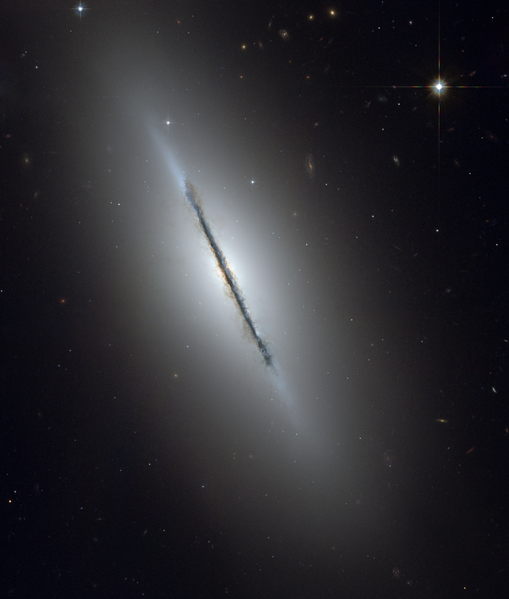ملف:Ngc5866 hst big.png

حجم هذه المعاينة: 509 × 599 بكسل. الأبعاد الأخرى: 204 × 240 بكسل | 408 × 480 بكسل | 652 × 768 بكسل | 870 × 1٬024 بكسل | 1٬739 × 2٬048 بكسل | 3٬190 × 3٬756 بكسل.
الملف الأصلي (3٬190 × 3٬756 بكسل حجم الملف: 25٫78 ميجابايت، نوع MIME: image/png)
تاريخ الملف
اضغط على زمن/تاريخ لرؤية الملف كما بدا في هذا الزمن.
| زمن/تاريخ | صورة مصغرة | الأبعاد | مستخدم | تعليق | |
|---|---|---|---|---|---|
| حالي | 18:38، 16 فبراير 2009 |  | 3٬190 × 3٬756 (25٫78 ميجابايت) | Spencer | {{Information |Description={{en|1=From original NASA press release: :This is a unique view of the disk galaxy en:NGC 5866 tilted nearly edge-on to our line-of-sight. Hubble's sharp vision reveals a crisp dust lane dividing |
استخدام الملف
ال5 صفحات التالية تستخدم هذا الملف:
الاستخدام العالمي للملف
الويكيات الأخرى التالية تستخدم هذا الملف:
- الاستخدام في ab.wikipedia.org
- الاستخدام في ace.wikipedia.org
- الاستخدام في af.wikipedia.org
- الاستخدام في af.wikibooks.org
- الاستخدام في af.wikiquote.org
- الاستخدام في af.wiktionary.org
- الاستخدام في ak.wikipedia.org
- الاستخدام في als.wikipedia.org
- الاستخدام في am.wikipedia.org
- الاستخدام في am.wiktionary.org
- الاستخدام في ang.wikipedia.org
- الاستخدام في ang.wiktionary.org
- الاستخدام في an.wikipedia.org
- الاستخدام في an.wiktionary.org
- الاستخدام في arc.wikipedia.org
- الاستخدام في ar.wikibooks.org
- الاستخدام في ar.wikinews.org
- الاستخدام في ar.wikiquote.org
- الاستخدام في ar.wikisource.org
- الاستخدام في ar.wikiversity.org
- الاستخدام في ar.wiktionary.org
- الاستخدام في arz.wikipedia.org
- الاستخدام في ast.wikipedia.org
- الاستخدام في ast.wiktionary.org
- الاستخدام في as.wikipedia.org
- الاستخدام في av.wikipedia.org
- الاستخدام في ay.wikipedia.org
- الاستخدام في ay.wiktionary.org
- الاستخدام في az.wikipedia.org
- الاستخدام في az.wikibooks.org
- الاستخدام في az.wikiquote.org
- الاستخدام في az.wikisource.org
- الاستخدام في az.wiktionary.org
- الاستخدام في bat-smg.wikipedia.org
- الاستخدام في ba.wikipedia.org
- الاستخدام في bcl.wikipedia.org
- الاستخدام في be-tarask.wikipedia.org
- الاستخدام في beta.wikiversity.org
- الاستخدام في be.wikipedia.org
- الاستخدام في be.wikibooks.org
- الاستخدام في be.wikiquote.org
- الاستخدام في be.wikisource.org
- الاستخدام في be.wiktionary.org
- الاستخدام في bg.wikipedia.org
اعرض المزيد من الاستخدام العام لهذا الملف.